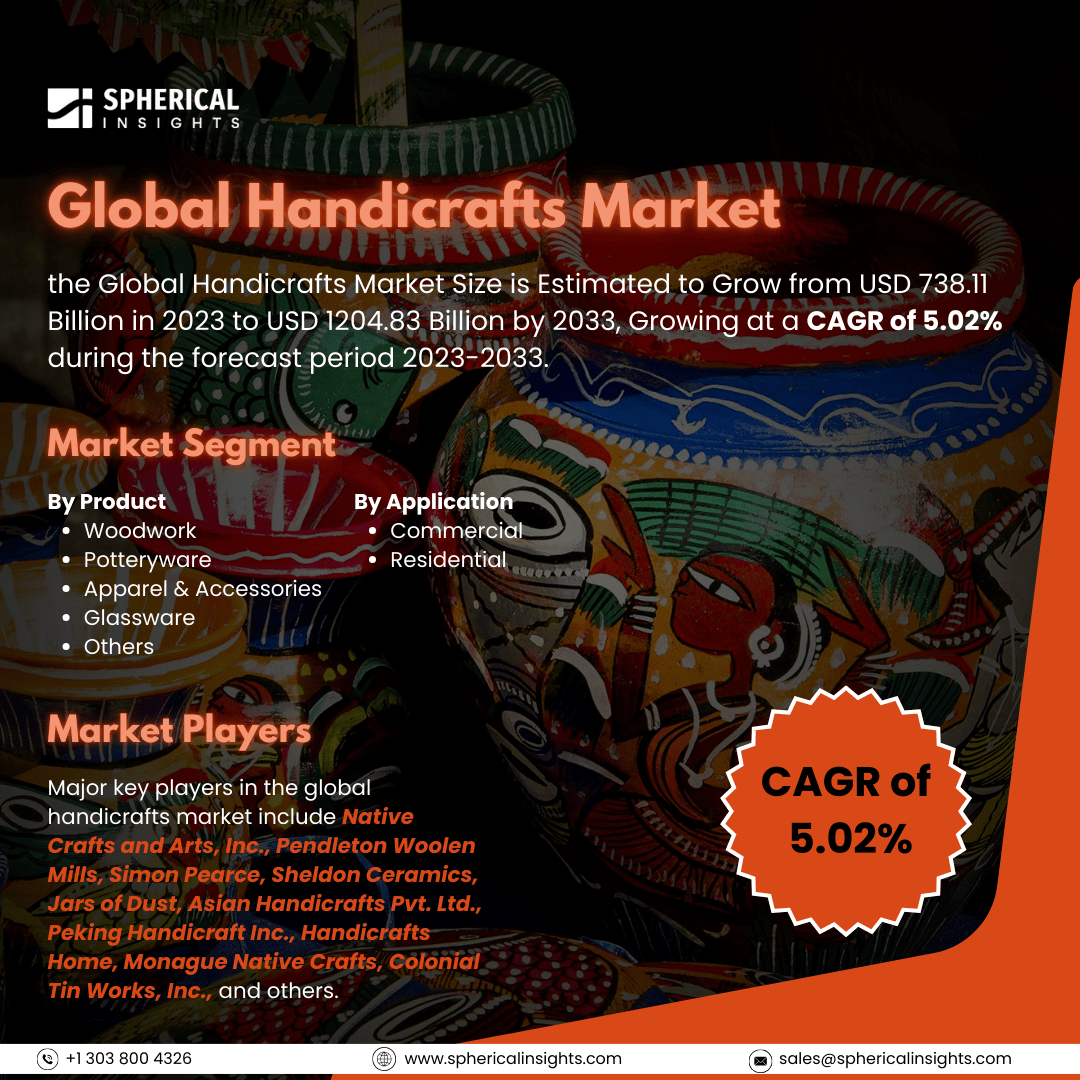Global Oil Dispersible Color Market Size to Worth USD 1626.28 Million by 2033
According to a research report published by Spherical Insights & Consulting, the Global Oil Dispersible Color Market Size is Estimated to Grow from USD 912.19 Million in 2023 to USD 1626.28 Million by 2033, Growing at a CAGR of 5.95% during the forecast period 2023-2033.
Browse key industry insights spread across 215 pages with 110 Market data tables and figures & charts from the report on the Global Oil Dispersible Color Market Size, Share, and COVID-19 Impact Analysis, By Product (Synthetic and Natural), By Application (Food & Beverages, Pharmaceuticals, Cosmetics, and Others), and By Region (North America, Europe, Asia-Pacific, Latin America, Middle East, and Africa), Analysis and Forecast 2023 – 2033.
The industry that manufactures and markets oil-soluble colors used in food, cosmetics, medications, and personal hygiene items is known as the global oil dispersible color market. The food and beverage industry's growing desire for natural and organic products is the reason for this growth. As customers look for safer and more environmentally friendly solutions, the demand for natural colorants in the cosmetics and personal care sector is also rising. The quality and durability of oil-dispersible colors have been enhanced by technological developments in extraction and formulation procedures, increasing their attractiveness to producers. The use of natural substances in food, cosmetics, and medications is being promoted by governments and regulatory agencies all around the world. Growing consumer knowledge of the possible health dangers linked with synthetic chemicals is partly responsible for this effort. Furthermore, it is projected that future market expansion will be driven by the growth of clean-label products and the growing use of oil-dispersible colors in new industries including pharmaceuticals and nutraceuticals. The market for oil-dispersible colors appears to have a bright future based on these factors taken together. However, the necessity to address safety issues and adhere to stringent regulatory criteria is one of the biggest obstacles facing the oil dispersible color market.
The natural segment held the largest share of 81.43% in 2023 and is estimated to grow at a CAGR of 3.70% throughout the projection period.
Based on the product, the global oil dispersible color market is categorized into synthetic and natural. Among these, the natural segment held the largest share of 81.43% in 2023 and is estimated to grow at a CAGR of 3.70% throughout the projection period. Since consumers are becoming more health conscious and aware of the possible negative consequences of synthetic ingredients, they are favoring natural and organic products. Colors that dissolve in natural oil are preferred because they are safe, environmentally friendly, and adhere to strict regulations. These natural colorants have become increasingly popular in the food and beverage sector especially as consumers look for clean-label products with clear ingredient lists.
The food & beverage segment dominated the global oil dispersible color market share in 2023 and is estimated to grow at a significant CAGR throughout the projection period.
Based on the application, the global oil dispersible color market is classified into food & beverages, pharmaceuticals, cosmetics, and others. Among these, the food & beverage segment dominated the global oil dispersible color market share in 2023 and is estimated to grow at a significant CAGR throughout the projection period. The market is driven mainly by the food and beverage industry's growing need for bright, natural colorants. Additionally, the growing popularity of organic and plant-based foods has increased demand for colors that dissolve in natural oil. Natural colorants are preferred owing to the strict regulations set by the food industry regarding food safety and additive use, which also contributes to the segment's significant market share.
Europe is expected to hold the largest share of the global oil dispersible color market through the forecast period.
Europe is expected to hold the largest share of the global oil dispersible color market through the forecast period. The region encourages the use of safe and natural colorants by enforcing strict laws on food safety and cosmetic components, such as the REACH regulation of the CE. The market is expanding attributed to the increased popularity of organic and natural cosmetics as well as the desire for clean-label goods. Countries such as the UK, France, and Germany are at the forefront of the use of oil-dispersible colors in a variety of products, such as food, drink, and personal care items.
Asia Pacific is predicted to grow at the fastest CAGR of the global oil dispersible color market over the forecast period. The food and beverage and cosmetics sectors in nations such as China, Japan, and India are the reason for this. The growth of the middle class increased disposable incomes, and expanding knowledge of the advantages of natural colorants are the main drivers of market expansion. Manufacturers in the area are also putting more of an emphasis on eco-friendly and sustainable products to meet changing consumer demands.
Competitive Analysis
Major key players in the global oil dispersible color market include DDW The Color House, Sensient Technologies Corporation, Roha Dyechem Pvt. Ltd, GNT Group, Lycored, Naturex (a Givaudan company), AromataGroup, Kalsec Inc, Fiorio Colori S.p.A., and others.
Recent Developments
- In September 2024, Givaudan Active Beauty unveiled the [N.A.S.] Vibrant Collection, a brand-new line of active plant extracts for hybrid cosmetics that are 100% natural in origin. This line includes oil-dispersible powders designed to give makeup biological efficacy without compromising color stability, intensity, or performance.
- In March 2024, Benjamin Moore, a paint, color, and coatings supplier, introduced Woodluxe, a whole range of high-end, weatherproof exterior stains. These products come in different opacities and are formulated with water or oil.
Key Target Audience
- Market Players
- Investors
- End-users
- Government Authorities
- Consulting and Research Firm
- Venture capitalists
- Value-Added Resellers (VARs)
Market Segment
This study forecasts revenue at global, regional, and country levels from 2023 to 2033. Spherical Insights has segmented the global oil dispersible color market based on the below-mentioned segments:
Global Oil Dispersible Color Market, By Product
Global Oil Dispersible Color Market, By Application
- Food & Beverages
- Pharmaceuticals
- Cosmetics
- Others
Global Oil Dispersible Color Market, By Regional Analysis
- North America
- Europe
- Germany
- UK
- France
- Italy
- Spain
- Russia
- Rest of Europe
- Asia Pacific
- China
- Japan
- India
- South Korea
- Australia
- Rest of Asia Pacific
- South America
- Brazil
- Argentina
- Rest of South America
- Middle East & Africa
- UAE
- Saudi Arabia
- Qatar
- South Africa
- Rest of the Middle East & Africa



